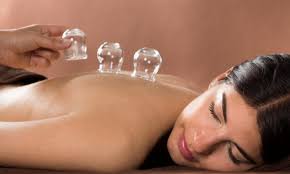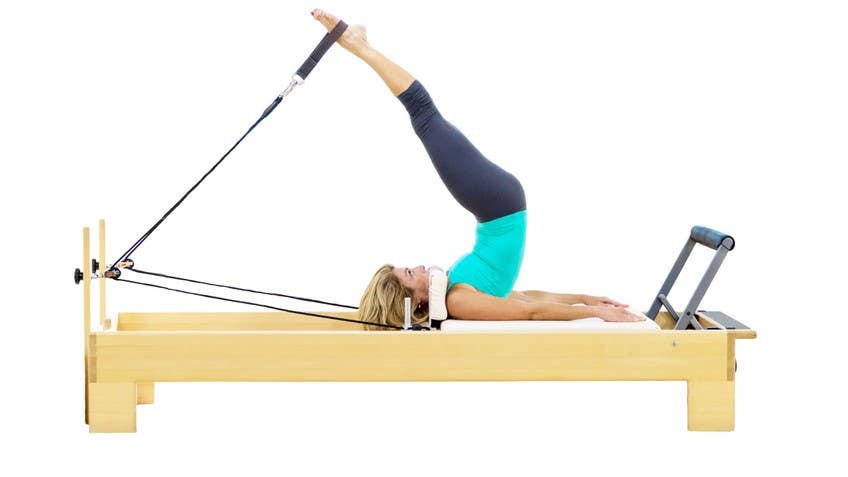I found the following article on Ideafit.com to be very interesting... especially after recently taking a barre class at a studio that I will leave unnamed. I discovered some of the same things that are mentioned in the article... quick contracting movements, extreme tucking of pelvis, moving too fast to make sure exercises are done correctly, too many clients for instructor to ensure correct form and alignment.
In contrast, I feel that the barre classes taught by ISP instructors put an emphasis on correct alignment and maintaining a neutral body position. Our teaching is more fluid with a focus on lengthening versus constantly contracting a muscle or group of muscles. With a background teaching Pilates and understanding the fundamentals of Pilates this helps us teach barre in a safe and effective way. Barre and Pilates make a good team. Try it out!

Risks (and Limitations) of Barre
by
Shirley Archer, JD, MA on Apr 04, 2016
Susan Grimm, 60 years old, in Orlando, Florida, says, “When I opened the door of the 1 Body Studio, managed by Leslee Bender, I felt at home. I had been turned away before from an expensive local barre studio. After two C-sections and much weight gain, I felt horrible about myself. I tried health clubs but always felt out of place. In 1 Body Studio’s barre class, I could go at my own pace. I try to come three or four times a week. I’ve lost 40 pounds, but the weight loss is icing on the cake. I feel stronger now. I hear my body more now than ever.”
Grimm’s story points to one reason why barre classes are growing in popularity: While participants can train together, they receive individual coaching and work at their own pace. Another reason for barre’s success? Using a prop helps many students feel confident they can accomplish exercises that otherwise would be too intimidating. Bender noticed that this was true in Grimm’s case.
“People can feel success doing barre,” observes Michele Olson, PhD, CSCS, professor of exercise science and a researcher at Auburn University at Montgomery, in Montgomery, Alabama. “It’s not over-the-top cardio like HIIT, which is demanding. Barre classes use positions, postures and exercises that target muscles in the trouble-zone areas such as legs, glutes and abdominals, making people feel satisfied that they’ve challenged those ‘challenging to change’ body areas.”
Tricia Murphy Madden, co-creator of Barre Above™ and fitness director at Denali Fitness in Seattle, says, “Barre is a current fitness obsession because its focus is muscular endurance. Bodies respond rapidly, because for many people it’s their first time doing endurance training. And it’s low impact, upbeat and easy to follow.”
Statistics support the noticeable barre boom. Barre and Pilates are the top two group exercise activities among women, according to the Fall 2014 IRHSA Health Club Consumer Seasonal Trend Report. Barre has grown so quickly that the Sports& Fitness Industry Association began collecting data on it in 2013. From 2013 to 2014, total participation in barre across the United States rose by more than 10% (Sports& Fitness Industry Association 2015). Currently, barre programs are providing the boost to the fitness industry that CrossFit® stimulated a few years ago. Fitness facilities are adding programs to avoid losing members to studios.
Risks (and Limitations)
of Barre
Barre may involve two isometric-style training elements: pulsing and static holds. Isometric training has benefits, but also limitations and risks.
Pulsing —contracting a muscle in a range of motion up to 2 inches—is close to an isometric contraction, and the burning sensation means the muscle is primarily using anaerobic glycolysis to fuel contractions, explains Olson. With pulsing, increased strength occurs
only at the precise range where pulsing occurs.
A
static hold is an isometric contraction that improves the ability to hold a position longer without reaching muscular fatigue. For example, when you hold a crouched position in an activity like gardening, you’re maintaining a static hold.
Pulses and static holds should be done for 10–30 seconds after the muscle has been prefatigued with full-range-of-motion exercises—which is very challenging.
Risks of isometric-style training include lightheadedness or dizziness, explains Olson. Deep exhalations that release a lot of carbon dioxide reduce lactate levels, which can make participants light-headed until they adapt. People are also prone to holding their breath during long isometric contractions; this can cause blood pressure to rise and then fall quickly, leading to dizziness, light-headedness or “seeing stars.”
Reminding students to breathe is essential.
There are other risks to barre if proper form is not maintained: People can develop or exacerbate lower-back pain, and they can place too much stress on joints (hips, knees or ankles) and connective tissue. Externally rotating the legs or doing toning exercises on the balls of the feet can worsen this. Bender says, “
Participants should work in their personal neutral alignment so they can move in and out of exercises without restricting the lumbar and thoracic spine. People should also avoid doing excessive external rotation, overusing hip flexors and tucking the pelvis.”
Olson agrees: “Extreme positions are unnecessary and unadvised.
Tucking [the pelvis] is overtaxing on the low back and sacrum, and it pushes soft tissues and spinal alignment into ranges that cause too much compression and shear force.” Jenn Hall, Atlanta-based director of education programs for Lebert Training Systems™, in Canada, and creator of LTS LeBarre, recommends teaching all exercises initially in parallel and then introducing them in external rotation when people have developed sufficient strength to maintain good alignment.
“More and more people are suffering from barre injuries because they are not training in proper alignment,” says Michelle Austin, creator of the Fluidity® Method and CEO and founder of Fluidity Management, LLC, in Indialantic, Florida. “. . . They’re often using posterior tilts and training small muscles before large muscles.
If people train in misalignment, they make their pelvic floors weaker, their balance gets worse and [they develop more] back issues.” Some experts think it is essential for barres to be height adjustable and able to support a participant’s weight in 360 degrees for a workout to be effective. Other experts think portable barres and wall-mounted barres can be equally effective for training. To learn more about different types of barre programming and equipment options, see the Web Extra.
To read more about how to create a safe and effective barre program, please see
"The Barre Boom Bonanza" in the online IDEA Library or in the November-December 2015 print issue of
IDEA Fitness Journal. If you cannot access the full article and would like to, please contact the IDEA Inspired Service Team at (800) 999-4332, ext. 7.
References
Sports & Fitness Industry Association. 2015a. 2015 Barre Single Sports Participation Report. Silver Spring, MD: Sports & Fitness Industry Association.
Sports & Fitness Industry Association. 2015b. 2015 Sports, Fitness and Leisure Activities Topline Report. Silver Spring, MD: Sports & Fitness Industry Association.















